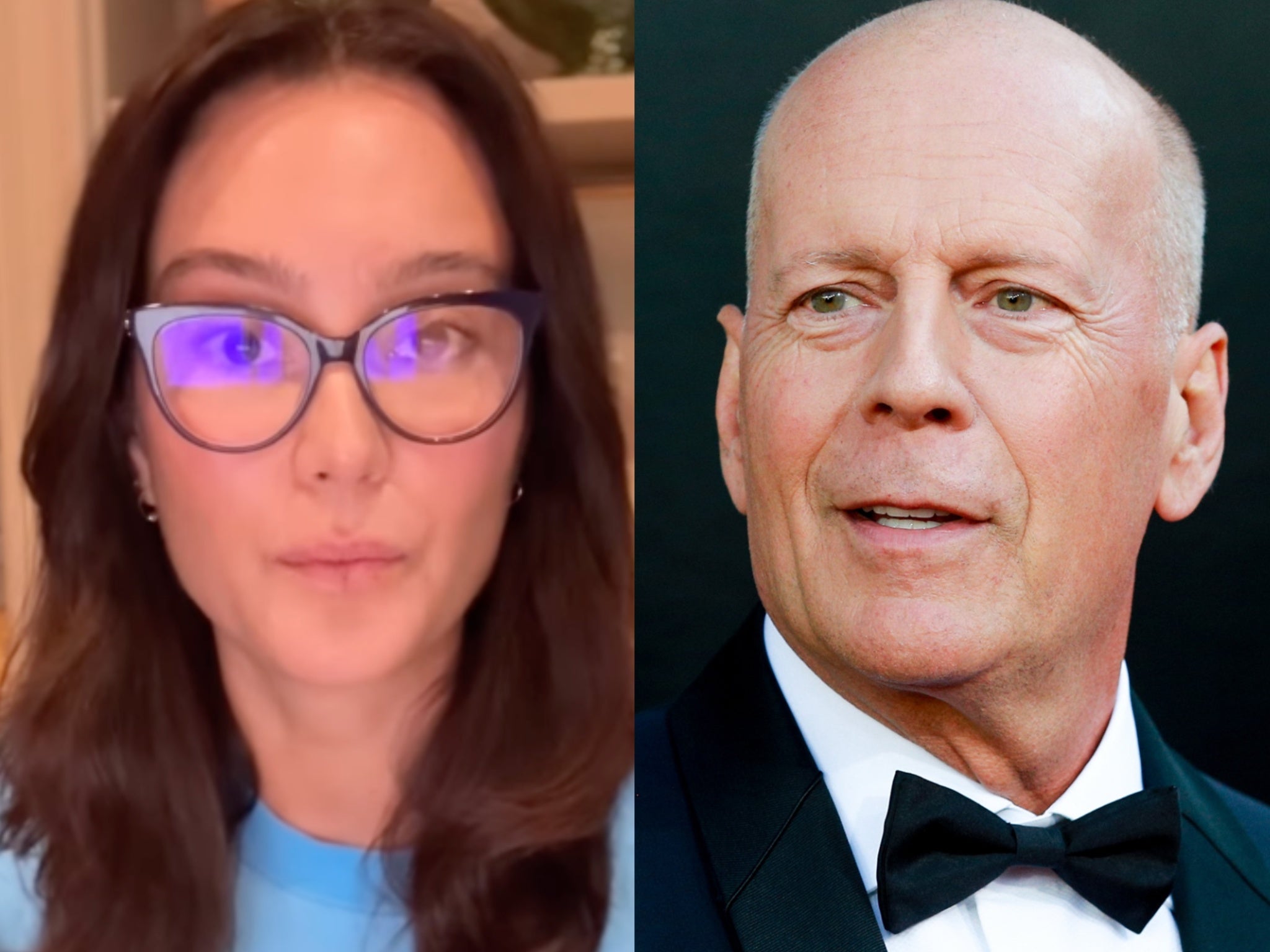Bruce Willis's wife, Emma Heming Willis, opened on the role of caregiver for her husband in a new memory.
Willis's family announced in 2023 that Frontotemporal dementia (FTD) diagnosed him, just one year after they said he was “moving away” from acting because he had aphasia.
Posted on Tuesday, The unexpected trip: find strength, hope and yourself on the way of care Heming Willis's detailed trip to receive the Die Diagnosis of the actor, how he adapted to the care role as he was still the mother of his two daughters, Mabel Ray, 13, and Evelyn Penn, 11.
Here, we round everything we learned from Willis's Dementia struggle from his wife's new memoirs.
Heming Willis was committed when he met Willis for the first time
The book begins with Heming Willis explaining his relationship with the retired actor and how they fell in love. She wrote that the two met in 2005 through her personal coach, Gunnar Peterson. At that time, he left the gym when Peterson greeted her to meet Willis.
“Was it love at first glance? However, Willis had a different opinion about the situation when he turned to Peterson after being presented to her and immediately said:” I'm going to marry that girl one day. “
Heming Willis was not a fan of Willis's films
After meeting the actor, Heming Willis continued to see the Pulp fiction Actor in the gym and spoke with his mother about the “pleasant” and “attractive” he was. His mother reiterated his commitment, to which he replied: “It was just an observation.”
“The truth is that he was not a fan of Bruce Willis per se,” Heming Willis wrote. “Yes, I grew up Moonlighting But I had seen only one of his films, ArmageddonWhen he first came out in the late 90s. In addition to that, I really didn't pay much attention. ”
Before Willis received his formal diagnosis, his wife noticed that something was “off”

Heming Willis explained that, before her husband's FTD diagnosis, there was a period of confusion in which she knew something was “deactivated.”
“I can't identify exactly when it started, it's very gray, but at some point, our relationship began to feel,” said the memoirs. “There were conversations that I remembered differently from what Bruce did, and there seemed to be many bad communications between the two.”
She discussed these concerns with her husband's doctor, but had no idea how to describe what he was witnessing. “Although I wasn't sure what was happening, one thing was clear: this was not a typical Bruce behavior,” Heming Willis wrote.
Heming Willis was told to stop side by talking to Willis

Once Willis was diagnosed with FTD, the model began looking for a “dementia care specialist” to make sure she could take care of him correctly, this is how she met Teepa Snow.
The snow provided advice on some details that should pay attention to taking care of her husband.
“Teepa told me not to use everything black and suggested that we replace any felpud of that color. To people with dementia, a black area may seem like a hole, so someone who wear a black shirt would seem to have a floating head, and a black felpudo may seem like a hole in the ground,” he recalled.
“He also told me to stop side when I talked to Bruce, which is a non -hiring position, instead of facing him directly, which may sometimes seem aggressive for a person with dementia.”
Heming Willis decided to get her husband out of the family's house

While they took care of Willis, things slowly began to be unmanageable with stairs and other items in their home, becoming a danger of security. They told her several times that she began to consider a caregiver, but he continually refused until her neurologist explained the security concerns that could arise for her, Willis and her children.
In terms of progressing beyond hiring a caregiver and finding an assisted life center for him, Heming Willis explained that his condition began to affect his daughters.
“With FTD and other forms of dementia, some people become more sensitive to noise, which can cause distraction, confusion and agitation. So I had everyone on the home to keep it as peaceful and serene as possible,” said the memoirs. “This meant that the play dates were obsolete and forgot about the pijamadas. It was as if I had a snout in our children, and I felt that I was starting to isolate them from having their own lives.”












